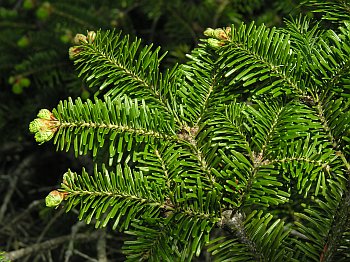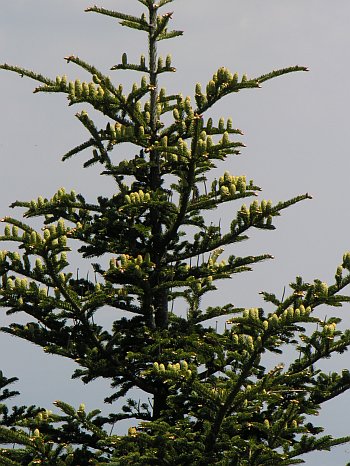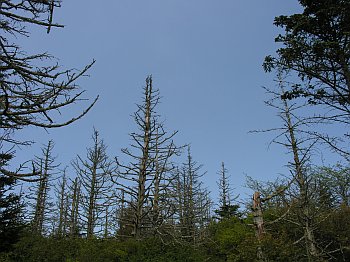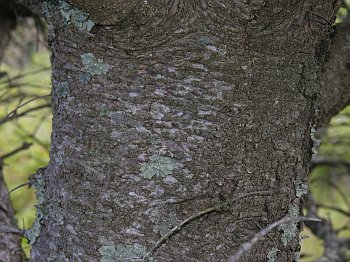
Endemic to the southern Appalachians, Fraser Fir grows naturally only on high mountain peaks from southern Virginia to northern Georgia. The center of its range is North Carolina, where it occurs in 9 counties (2 counties each in VA and TN, 1 in GA). It is abundantly planted elsewhere in Christmas tree farms.
The leaves are flattened, like those of Hemlock (Tsuga), but are directly attached to the twigs, instead of attached on short bases. Hemlock grows at much lower elevations. Crushed or dried leaves are extremely fragrant, with a balsamy aroma.

The cones are borne upright on the branches. This is a rare surviving mature tree, adjacent to the skeleton forest pictured below.
Grayson Co., VA 5/28/06.

In many areas, most or all of the adult Fraser Fir trees have been killed by a combination of factors, leaving behind skeleton forests. The main factor leading to the massive die-off is infestation by the introduced Balsam Woolly Adelgid (Adelges piceae). Acid rain and air pollution also may contribute to the decline.
The two hemlock species in NC are also in severe decline because of a related recently introduced insect: the Hemlock Woolly Adelgid (Adelges tsugae)
Grayson Co., VA 5/28/06.

Bark detail.
Grayson Co., VA 5/28/06.